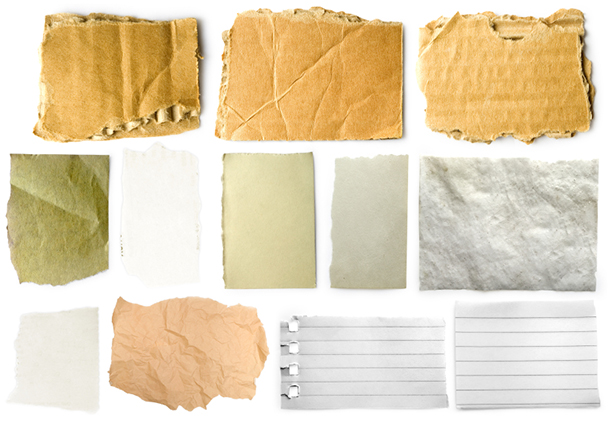
One of the most common items we recycle on a day basis, paper, can be a tricky recyclable at times. Because paper is made using different recipes, including different types of fiber and chemical requirements, recycling yesterday’s newspaper, the old grocery list or last month’s issue of Vogue is not a simple as we would like it to be.
According to the EPA, the challenge of paper recyclability can be broken down into five different paper grades, including:
- Old corrugated containers, also known as corrugated cardboard. Paper mills use these materials to make new recycled-content shipping boxes and recycled paperboard for product packaging like cereal boxes, shoeboxes and more.
- Mixed paper is a broader category, which includes discarded mail, telephone books, paperboard, magazines and catalogs. Paper mills use mixed paper to produce paperboard and tissue, as a secondary fiber in the production of new paper or as a raw material in nonpaper products such as gypsum wallboard, chipboard roofing felt, cellulose insulation and molded pulp products such as egg cartons.
- Old newspapers are used by mills to make new recycled-content newsprint and in recycled paperboard and tissue with other paper grades.
- High-grade de-inked paper is made of high-grade paper such as letterhead, copier paper, envelopes and printer and convertor scrap that has gone through the printing process. It must first be de-inked before it can be reprocessed into high-grade paper products such as printing and writing papers or tissue.
- Pulp substitutes are a high-grade paper, often sourced as shavings and clippings from converting operations at paper mills and print shops. Mills can use pulp substitutes in place of virgin materials to make high-grade paper products.
So, why is all of this paper grade information so important? According to the EPA, paper mills seek to purchase bales of recovered paper that have a desirable compositional quality and that meet specifications resulting in high-quality recycled-content products. In other words, your efforts to sort paper correctly are crucial so these materials can be recycled properly and not become contaminated. With your help recycled paper holds great value and is a better solution than tossing it in the trashcan.
To make recycling easier on the consumer, most municipalities offer single-stream collection programs for participants to recycle all of their materials into one collection container. From an empty Coca-Cola bottle, to an expired telephone book, single stream is designed to be convenient and easy with the average consumer in mind. The intention is to not only increase the amount of recyclables collected, but also reduce the number of collection trucks needed. Ideally, no matter the paper grade you may be attempting to recycle, a single-stream program will take it with no need to worry.
In some cases, however, not all municipalities can support a single-stream collection and resort to a sorted-stream collection model. This collection method requires participants to place each recyclable material in the appropriate collection bin and may ask of residents to sort their paper assortment based on paper grade. While technology continues to advance and enhance the ability to handle, identify and separate paper grades for recycling, not all municipalities are quite there and require a little more effort on the consumer end. All in all, it’s best to check out your local recycling program’s abilities to hold up your environmental civic duty.
 One of the most common items we recycle on a day basis, paper, can be a tricky recyclable at times. Because paper is made using different recipes, including different types of fiber and chemical requirements, recycling yesterday’s newspaper, the old grocery list or last month’s issue of Vogue is not a simple as we would like it to be.
According to the EPA, the challenge of paper recyclability can be broken down into five different paper grades, including:
One of the most common items we recycle on a day basis, paper, can be a tricky recyclable at times. Because paper is made using different recipes, including different types of fiber and chemical requirements, recycling yesterday’s newspaper, the old grocery list or last month’s issue of Vogue is not a simple as we would like it to be.
According to the EPA, the challenge of paper recyclability can be broken down into five different paper grades, including: